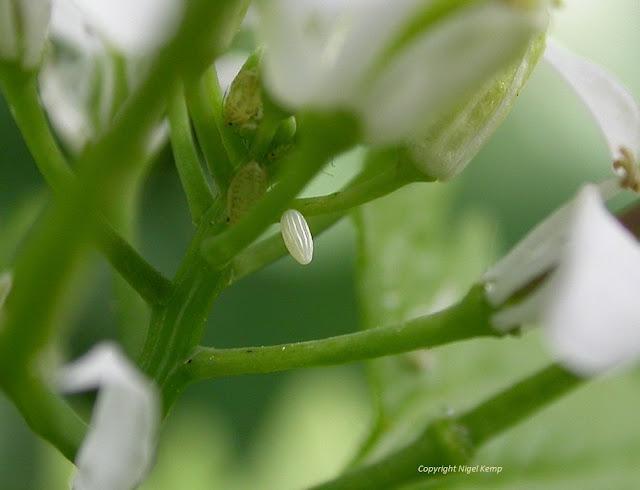A true harbinger of Spring, the Orange-tip (Anthocharis cardamines) breeds in my garden (on garlic mustard) most years and 2020 afforded me the time to monitor its life cycle almost on a daily basis during May and June.
This species overwinters as a pupa and the adults are usually on the wing from early-April until late-June. In good years, they can emerge as early as mid-March and a small partial second brood can sometimes occur in August or September.
The usual foodplants are Garlic Mustard and Lady's Smock and the female will lay her eggs on the stems just below the flower heads. The young larva will then feed mainly on the fresh seed pods when it hatches, having first eaten its egg-shell.
The developing larvae will go through five instars (stages between skin shedding) before it pupates. It will remain a pupa for about ten months until the adult butterfly emerges the following Spring.
Of the following images, those of the developing larvae were taken during 2020. I have delved into my photo library for the other images.
Orange-tip (Anthocharis cardamines)
Male





































